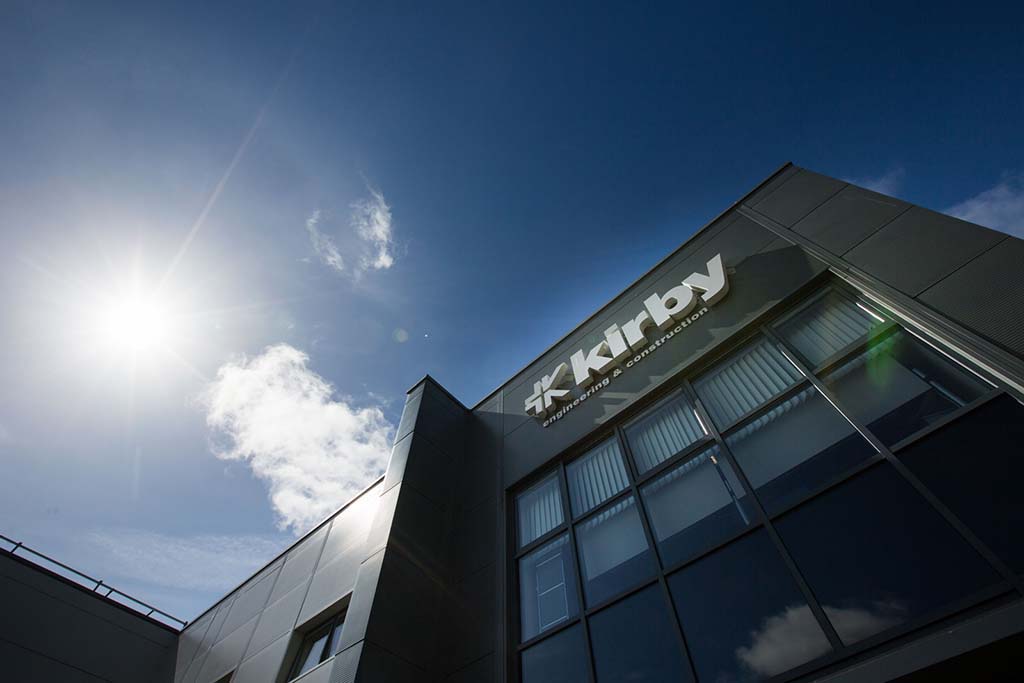Adapting to change and learning as we go.
DCD Opinions speak to Darran Monaghan, Kirby Group Engineering.
There are two challenges facing the construction of data centres at the moment. The first is that the carbon footprint associated with these resource-hungry facilities must be reduced. The second is that the rapidly growing demand for their services must be met and facilitated into the future. In the past, these two objectives would have been seen as mutually exclusive. Now, the industry is coming to terms with the fact that the two goals must find a way to coexist.
Kirby is a leading Irish mechanical and electrical engineering company, with over 1,300 direct employees and more than 2,500 people deployed across Ireland, the UK and Mainland Europe. The firm recorded a turnover of more than €400m in 2021 and works mainly with the Data Centre, Life Sciences, Industrial, Commercial, Power and Renewables sectors.
Kirby has been in business since the mid 1960s and so has experienced seismic changes in the construction and engineering sectors during its lifetime. During my time here, I’ve found Kirby to be an impressively forward-thinking company, which is a crucial asset when it comes to our work.
If a client is considering working with Kirby, they want to know every detail on how we propose to minimize our impact on the environment.
There’s no question but that clients have got the message on sustainability, carbon footprint and environmentally friendly ways of doing business. These concerns are now among the top priorities for any project that comes our way.
If a client is considering working with Kirby, they want to know every detail on how we propose to minimise our impact on the environment. From the methods used to generate power, to efficient construction methods, to resource management, right down to our waste reduction policies. We seek to minimise the creation of waste by avoiding unnecessary wastage of materials and recycling materials that cannot be directly reused.
Thankfully, we’ve invested heavily in the area of environmental sustainability at Kirby. We are dedicated to assessing, monitoring and reducing our carbon footprint, while continuing to deliver first class results for our clients.
We implement actions at reducing our carbon footprint at corporate level and at local project levels. Initiatives such as life cycle costing, monitoring energy use, car-pooling, accommodation sharing and sourcing local accommodation, awareness and training for staff are some of the programs that we implement and audit.
We’ve also seen how longstanding investments in other working methods can contribute to efficiencies in our output today. Kirby first began working on prefabrication and OSM about twenty years ago.
A project’s carbon footprint doesn’t just evaporate once a build is completed and handed over to the client. Today’s data centers must be built to last and ideally become an asset to their wider environment.
It’s brought a wide range of benefits including the control of scheduling, quality, cost and risk, but as we develop more of a sustainability mindset, we can see how centralising this manufacturing reduces an on-site carbon footprint too. Fewer people need to travel to a project to construct these elements, and those who do visit the site need to spend fewer hours there.
But of course, a project’s carbon footprint doesn’t evaporate once a build is completed and handed over to the client. Today’s data centres must be built to last and ideally become an asset to their wider environment – a characteristic which is becoming more achievable now.
An industry colleague recently made a comment that’s stayed with me. He remarked that when it comes to data centres, ‘we don’t build them to damage anything’. That’s why we’re building data centres with the latest cutting edge equipment and cooling systems. We’re bringing more cutting-edge cooling infrastructure to our projects and implementing new ways to cool the hallways. We deliver and install components in bulk, we offer methods to reuse heat and water. Given the shocking statistic that cement is responsible for 8 per cent of global construction emissions, we’re leading the way in using more timber and steel on these projects, to help drive down that figure.
We’ve also helped our clients introduce district heat systems using the energy generated by data centres. It’s a way to simultaneously reduce carbon footprint and give back to the local community. We’re taking a long-term look at the life cycle of the data centre and those who live around it, to maximise its effectiveness while minimising its impact on its location.
The fact that our clients welcome our initiatives in these areas, even if they’re new to the concepts, speaks volumes about their focus on sustainability but also about the trust they have in us to deliver. Kirby has successfully fostered the partnership approach to working with customers. We engage as early as possible in the design phase, which gives us the opportunity to present sustainable options from the start, and we try to maintain our focus on that throughout the process.
The construction and engineering projects we take on have come a long way when it comes to sustainability and carbon efficiency, but one basic principle still applies, as it has done for decades across the business. That’s the fact that we must learn from everything we do. The review of each completed project should identify areas for improvement on the next one. Kirby is striving towards being carbon neutral and ultimately carbon positive, and that is how we benchmark our sustainability success at Kirby.

